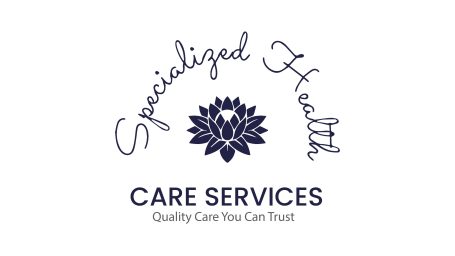Navigating the Workplace with Autism
Working in a bustling office environment can be a daunting experience for anyone, but for individuals living with autism, it can present unique challenges. From sensory sensitivities to difficulties in communication and social interaction, navigating the workplace can sometimes feel like traversing a minefield. However, with the right strategies and support in place, individuals with autism can thrive in their careers and make meaningful contributions to their workplaces. In this blog post, we'll explore some practical tips and insights for successfully navigating the workplace while living with autism.
Understanding Your Strengths and Challenges
Before diving into specific strategies, it's essential to recognize and understand your own strengths and challenges. Each individual with autism is unique, and what works for one person may not work for another. Take some time to reflect on:
- Your strengths: Identify areas where you excel, whether it's attention to detail, problem-solving skills, or a deep passion for your work.
- Your challenges: Recognize areas where you may face difficulties, such as social interactions, handling sensory stimuli, or adapting to changes in routine.
By understanding your strengths and challenges, you can better advocate for yourself and find strategies that work best for you.
Disclosure and Advocacy
Deciding whether to disclose your autism diagnosis in the workplace is a personal decision. While some individuals choose to disclose to seek accommodations and support, others may prefer to keep their diagnosis private. Consider the following:
- Pros of disclosure: Access to accommodations such as a quiet workspace, flexible scheduling, or assistance with social interactions. It can also help colleagues understand your unique needs and foster a more inclusive work environment.
- Cons of disclosure: Potential stigma or discrimination from colleagues or employers. It's essential to weigh the potential risks and benefits before making a decision.
If you decide to disclose, clearly communicate your needs and preferences to your employer and colleagues. Remember, advocating for yourself is not a sign of weakness but a strength.
Creating a Supportive Workspace
Creating a workspace that caters to your sensory needs can significantly enhance your productivity and well-being. Consider the following tips:
- Designate a quiet space: If possible, request a workspace away from noisy common areas or high-traffic areas to minimize sensory overload.
- Use noise-cancelling headphones: Invest in noise-cancelling headphones to block out distracting sounds and create a more focused work environment.
- Adjust lighting: Bright fluorescent lights can be overwhelming for individuals with autism. Use desk lamps or natural light whenever possible, and consider using filters or dimmers to adjust lighting levels.
By creating a supportive workspace tailored to your needs, you can optimize your performance and minimize stress.
Communication Strategies
Effective communication is key to success in any workplace. However, individuals with autism may face challenges in understanding social cues or expressing themselves verbally. Here are some communication strategies to consider:
- Be direct and concise: Use clear and straightforward language to convey your thoughts and ideas. Avoid using ambiguous or figurative language that may be difficult to interpret.
- Ask for clarification: If you're unsure about something, don't hesitate to ask for clarification. It's better to seek clarification upfront than to struggle with misunderstandings later on.
- Use visual aids: Visual aids such as diagrams, charts, or written instructions can help enhance understanding and facilitate communication.
By adopting these communication strategies, you can effectively convey your thoughts and ideas in the workplace.
Building Social Connections
Building social connections in the workplace can be challenging, but it's essential for fostering a supportive and inclusive environment. Here are some tips for building social connections:
- Find common interests: Seek out colleagues who share similar interests or hobbies and initiate conversations based on shared topics.
- Participate in team activities: Take part in team-building activities or social events to get to know your colleagues outside of work-related contexts.
- Practice active listening: Be present and attentive when engaging in conversations with colleagues. Show genuine interest in what others have to say and ask follow-up questions to demonstrate your engagement.
While building social connections may take time and effort, the relationships you forge can enrich your work experience and contribute to your overall well-being.
Seeking Support
Navigating the workplace with autism can be challenging at times, but you don't have to do it alone. Don't hesitate to seek support from:
- Support groups: Joining a support group for individuals with autism can provide a valuable source of encouragement, advice, and understanding.
- Mentors: Connect with mentors or colleagues who can offer guidance and support as you navigate the challenges of the workplace.
- Employee assistance programs: Many workplaces offer employee assistance programs that provide access to counseling, resources, and support services.
Remember, asking for help is a sign of strength, not weakness. Don't hesitate to reach out for support when you need it.
Conclusion
Navigating the workplace with autism presents unique challenges, but with the right strategies and support in place, individuals with autism can thrive in their careers and make valuable contributions to their workplaces. By understanding your strengths and challenges, advocating for yourself, creating a supportive workspace, honing your communication skills, building social connections, and seeking support when needed, you can navigate the workplace with confidence and success. Remember, you are not alone on this journey, and with perseverance and determination, you can achieve your career goals and fulfill your potential.
We need your consent to load the translations
We use a third-party service to translate the website content that may collect data about your activity. Please review the details in the privacy policy and accept the service to view the translations.

